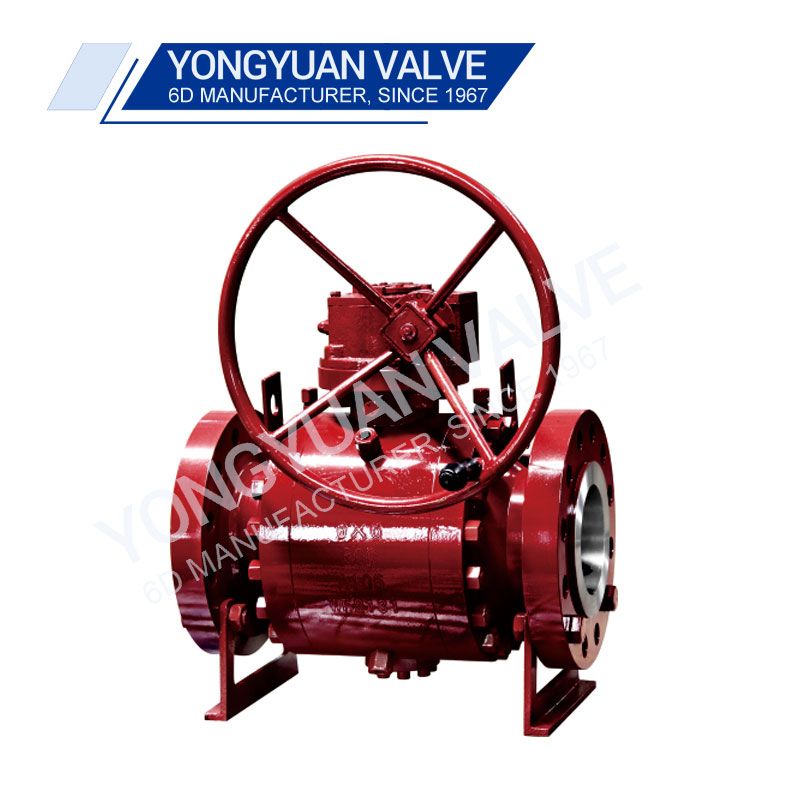Managing Corrosion & Abrasion: Installing & Operating Wafer API 6D Swing Check Valve
2024-03-28
In the realm of fluid control systems, the performance and longevity of valves can be significantly impacted by the operating environment. For the Wafer API 6D Swing Check Valve, which serves as a stalwart guardian against reverse flow, special considerations must be taken into account when installing and operating in corrosive or abrasive environments. In this blog post, we'll explore these considerations and provide insights into best practices for ensuring optimal performance and durability of the valve in such challenging conditions.
1. Material Selection:
The choice of materials for the Wafer API 6D Swing Check Valve is crucial when operating in corrosive or abrasive environments. Opt for materials that offer high resistance to corrosion and erosion, such as stainless steel, duplex stainless steel, or alloy materials. These materials provide superior durability and longevity, even in aggressive chemical or abrasive media.
2. Protective Coatings:
In addition to selecting the appropriate materials, applying protective coatings to the valve surfaces can further enhance its resistance to corrosion and abrasion. Epoxy coatings, fusion-bonded epoxy (FBE), or corrosion-resistant coatings can provide an extra layer of protection, preventing degradation of the valve components and extending its service life in harsh environments.
3. Sealing Solutions:
Proper sealing is essential for maintaining the integrity of the Wafer API 6D Swing Check Valve in corrosive or abrasive environments. Ensure that the sealing surfaces are made from compatible materials and are resistant to chemical attack or erosion. Additionally, consider using resilient seat materials, such as EPDM or Viton, which offer excellent chemical resistance and sealing performance.
4. Environmental Monitoring:
Regular monitoring of the operating environment is crucial for detecting any signs of corrosion or erosion that may affect the performance of the valve. Implement a comprehensive environmental monitoring program to assess factors such as temperature, pressure, pH levels, and fluid composition. This allows for early detection of potential issues and proactive measures to mitigate them.
5. Proper Installation:
Ensure that the Wafer API 6D Swing Check Valve is installed correctly in accordance with manufacturer guidelines and industry standards. Pay close attention to factors such as pipe alignment, support structures, and proper sealing to prevent leaks or stress on the valve body. Proper installation minimizes the risk of damage and ensures reliable operation in corrosive or abrasive environments.
6. Regular Maintenance:
Implement a proactive maintenance program to keep the Wafer API 6D Swing Check Valve in optimal condition in corrosive or abrasive environments. Conduct regular inspections, cleaning, and lubrication of valve components to remove any accumulated debris or corrosion. Replace worn or damaged parts promptly to prevent deterioration of the valve's performance and integrity.
Conclusion:
In conclusion, operating the Wafer API 6D Swing Check Valve in corrosive or abrasive environments requires careful consideration of materials, coatings, sealing solutions, environmental monitoring, installation practices, and maintenance procedures. By addressing these special considerations proactively, operators can ensure that the valve performs reliably and effectively, even in the most challenging operating conditions. With proper planning, installation, and maintenance, the Wafer API 6D Swing Check Valve can continue to serve as a robust and dependable guardian of fluid control systems, safeguarding against reverse flow and ensuring system integrity for years to come.



